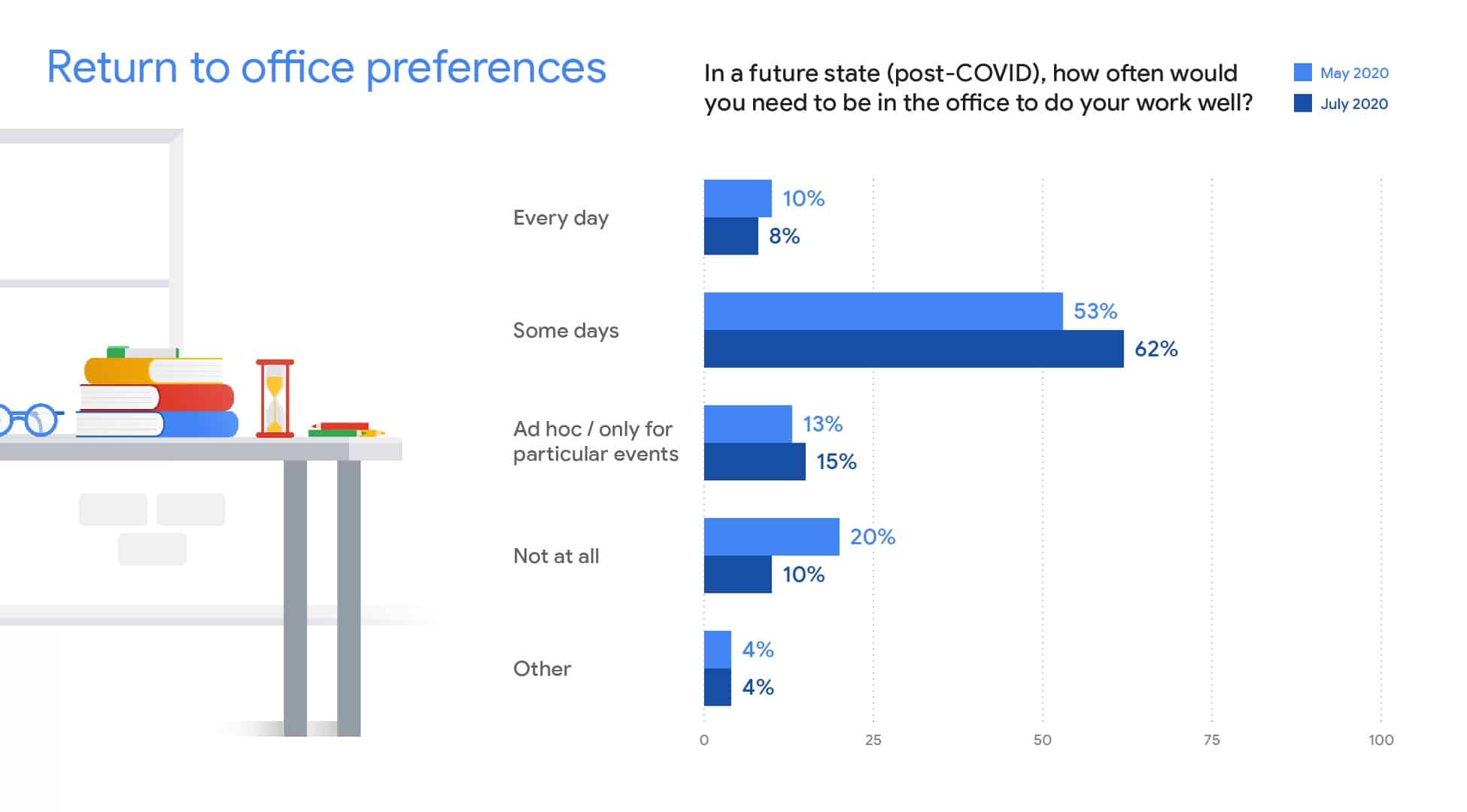Last week Google parent company Alphabet CEO Sundar Pichai weighed in with more evidence that the future of work will look very different after the pandemic than it did before.
Pichai said the company plans a hybrid office/WFH post-pandemic workplace model. This is largely based on feedback from Google employees who signaled a desire for flexibility. As the chart below suggests. Most Googlers say they want to come to the office on “some days”. As of July, only 8% wanted to come to the office every day.

“I see the future as being more flexible,” Pichai said in an interview with Time magazine. “We firmly believe that in-person, being together, having a sense of community is super important when you have to solve hard problems and create something new so we don’t see that changing. But we do think we need to create more flexibility and more hybrid models.”
A Hybrid Future
Now a new Localogy white paper, “Remote Work and the Local Commerce Ecosystem” outlines a similar vision for how COVID-19 will permanently alter the future of work and service delivery in the local commerce ecosystem.
The report addresses the longer-term impact remote work and service delivery will have on local and small businesses. The report acknowledges that for many small businesses, remote work is a foreign concept. From the white paper:
“For much of what most people think of as small businesses — dental practices, restaurants, beauty salons — remote work is either uncommon or challenging to achieve. Executive chefs, hair stylists, and bartenders don’t do WFH. Or so we thought before COVID.
“Once the COVID-driven shelter at home orders began to land in February and March, businesses of all sizes scrambled to figure out how to take organizations that had never been anything but physical and, poof, make them virtual.”
Turning Bandaids into Opportunities
So SMBs adopted many new processes just to get through the crisis. And now, many of these will become permanent factors after the crisis. These include work from home, eCommerce and online payments, delivery and curbside pickup, remote service delivery (via Zoom or FaceTime). From the white paper:
“As the crisis unfolded, businesses of all shapes and sizes scrambled to acquire and install new technologies to enable work from home, group collaboration, data security, not to mention customer facing technologies like eCommerce, contactless payments, chatbots, videoconferencing, and so on.
“Sitting atop of all of these themes is the notion of acceleration. This means that whatever trends were percolating pre-COVID had years shaved off of their adoption cycles once the crisis hit. We will be observing and measuring this fallout for many years to come.”
In the report, we cite Localogy’s Modern Commerce Monitor™ small business tracking study to support the conclusion that remote work and service delivery will become part of the post-pandemic new normal for small businesses. As the following chart from Wave V-III of the survey (conducted in July) makes clear, small businesses are making major long-term changes because of the pandemic. For example, these include more remote workers, more online sales, and more contactless payment systems, for starters.

Localogy members can download a copy of the report here.
More from Localogy
Local Industry Weighs in on the Pros and Cons of Remote Work





